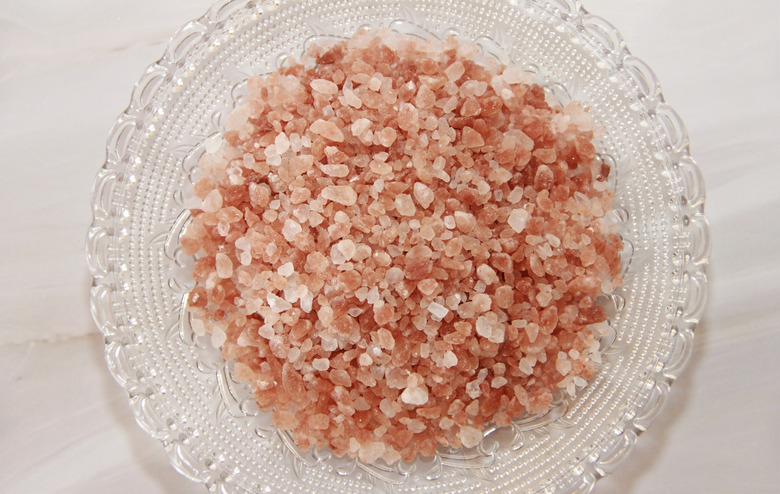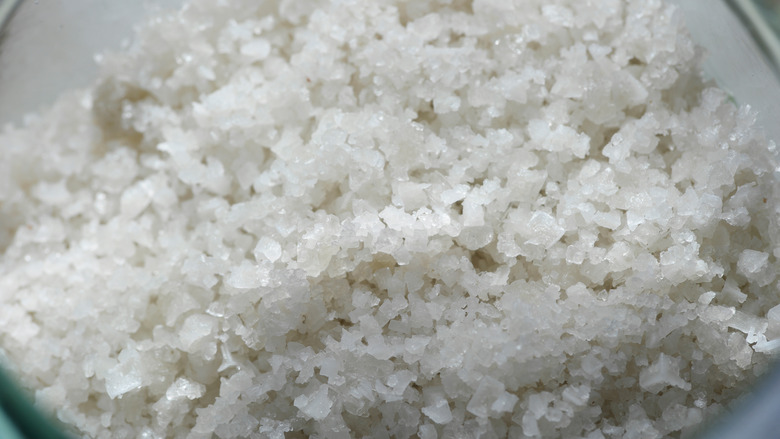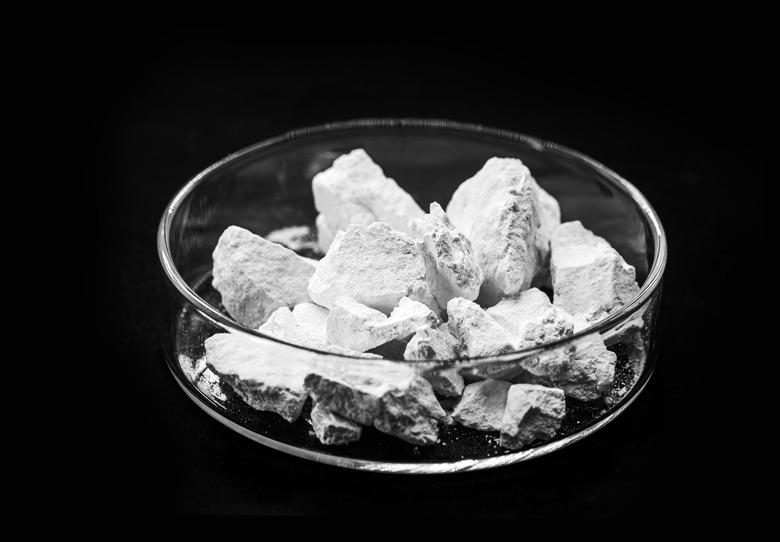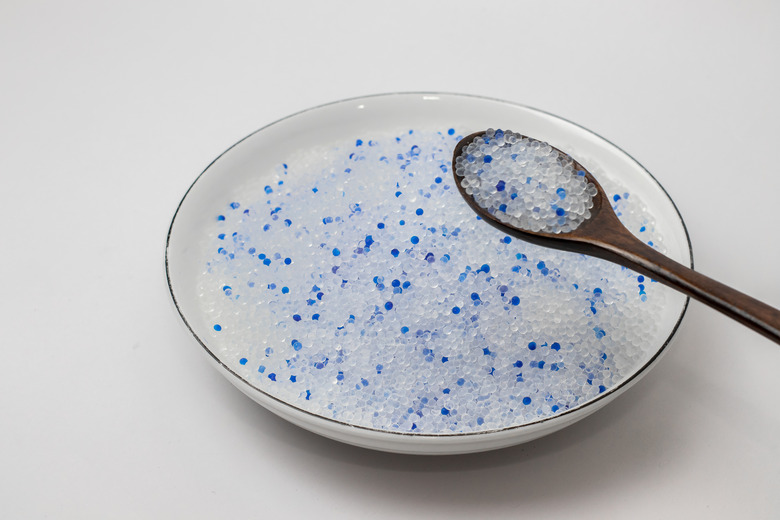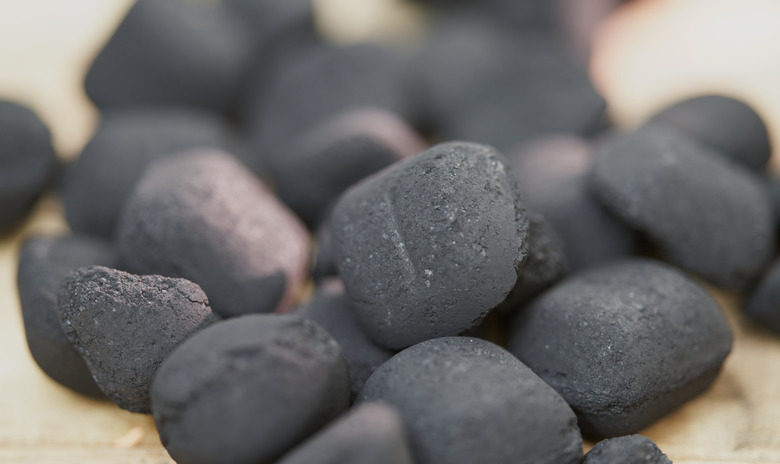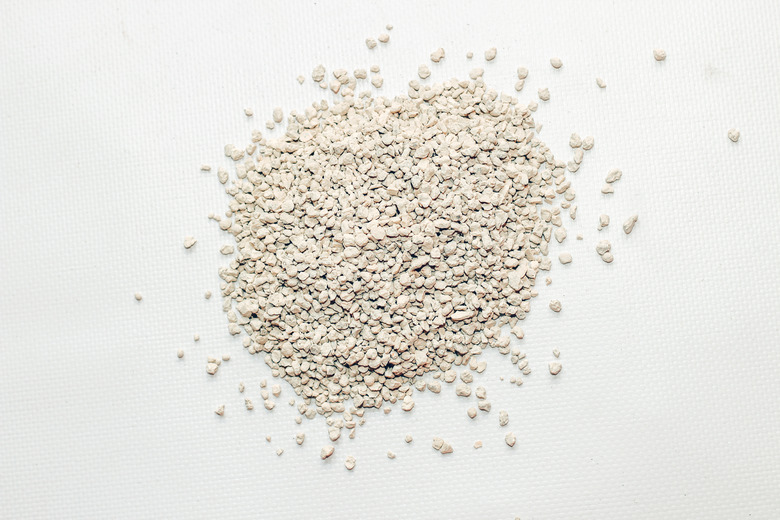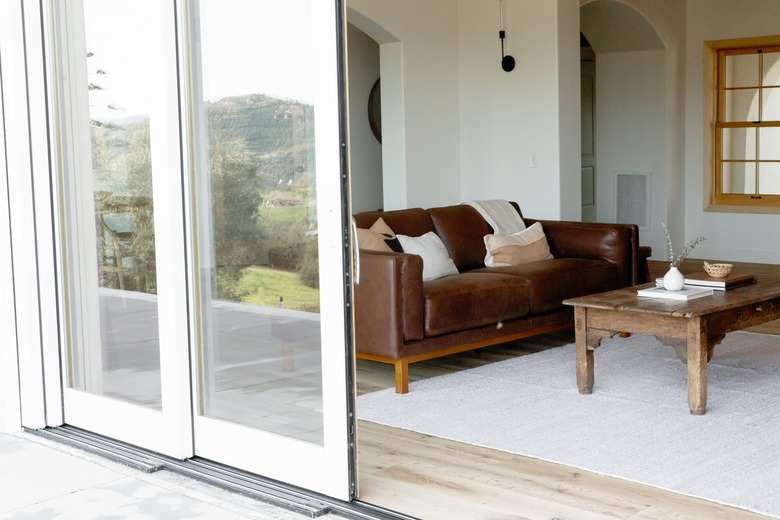5 DIY Dehumidifiers To Reduce The Humidity In Your House
We may receive a commission on purchases made from links.
The humidity in the air takes a lot of blame when people feel uncomfortable outdoors, but excess moisture inside your home can also cause issues. Humidity creates all kinds of problems. It promotes mold growth, makes wood swell, and takes the crunch out of potato chips and soda crackers. When the relative humidity surpasses 50 percent, you can start to notice damage to things inside your home.
Regulating humidity in a large space, such as your living room, is a job for an electric dehumidifier that circulates air through cooling coils to extract the water vapor in the air. (This is also one of the main jobs of an air conditioner.) If there's excess humidity in a smaller space and you don't have a dehumidifier available, you can remove some of the moisture from the air with DIY methods. This is typically in the form of a passive dehumidifier with a desiccant, which is a chemical that adsorbs or absorbs water molecules from the air.
Here are 5 DIY dehumidifier options to consider.
1. Rock Salt
1. Rock Salt
A readily available moisture absorber you can use to create a DIY dehumidifier is rock salt, which you can buy in a large bag to ensure you always have extra on hand. An unrefined form of sodium chloride, rock salt is a natural mineral with many uses, including melting ice and snow in the winter. It's also effective at absorbing extra moisture from small spaces. While table salt also absorbs moisture, rock salt is usually more effective, as well as cheaper when you buy it in large bags.
To make a rock salt dehumidifier to lower humidity in a small area, use a two-bucket setup. Here's how to make it:
- Drill holes along the sides and bottom of one 5-gallon bucket.
- Place the drilled bucket inside a second 5-gallon bucket (without holes), and fill the upper bucket with a bag of rock salt. As the salt sucks moisture out of the air, the water will drip down into the bottom bucket.
- Check the bottom bucket regularly to see if you need to empty the water.
- Keep the upper bucket full of rock salt.
Tip
If you can't find rock salt, any large salt crystals will work.
2. Calcium Chloride
2. Calcium Chloride
Calcium chloride is a form of salt that aggressively absorbs moisture from the air. At room temperature, it appears as pellets or flakes and can absorb several times its weight, making it highly effective at removing moisture from air. It's used for many purposes, including as an ice-melting agent and as a food additive, so it's readily available at home improvement stores, homebrew stores and specialty food stores.
Calcium chloride presents more of a health risk than sodium chloride (rock salt), although that risk is still considered low. If inhaled, calcium chloride can irritate the lungs, and contact with the eyes or wet skin can cause irritations or burns. It can also cause nausea, vomiting, and gastric distress if it's swallowed. Because it's corrosive, it isn't a good choice for dehumidifying in spaces in which metal items are stored.
When using calcium chloride in a passive homemade dehumidifier, be prepared for it to shed water. Calcium chloride eventually forms a solution with the water it absorbs. To accommodate the water runoff, your dehumidifier should include a screen to hold the calcium chloride pellets and a container to catch water. You can use calcium chloride flakes or pellets, but pellets are often easier to handle and stay on the screen well. Here are the steps to make a calcium chloride dehumidifier:
- Stretch a fiberglass screen across the mouth of a container. Your container can be a large one, such as a 1-gallon bucket, or a small one, such as an empty juice can.
- Let the screen sag slightly into the container, and secure it to the rim with clips or rubber bands.
- Sprinkle the calcium chloride pellets onto the screen, making a layer that is 1 to 2 inches thick.
- Cover the calcium chloride with more screen and secure the screen to the rim of the container. This prevents a spill if the container should fall over.
- Place the dehumidifier in a closet, cupboard, or drawer.
- Check the dehumidifier regularly, empty the collected water, and replenish the calcium chloride as needed.
3. Silica Gel
3. Silica Gel
You can purchase packets or pouches filled with silica gel, a form of silicon dioxide, that absorbs moisture from the air. As long as silica gel beads aren't coated with another compound, they are nontoxic, but the packets can be a choking hazard for small children. Silica gel can adsorb 40 percent of its weight in moisture.
Buying silica gel packets makes an easy DIY dehumidifier option that you can toss anywhere. Place these products in areas that consistently have high humidity to reduce the moisture in the air. Check them often to determine when you need to replace them. You can use these products in addition to your DIY dehumidifier to help with the moisture issue.
4. Charcoal
4. Charcoal
Another way to help control humidity in your home is with charcoal briquettes that you would use in a grill. The easily accessible chunks are highly absorbent and easy to handle since they are compact nuggets. Fill up an old coffee can or another container with the briquettes and place it in the humid areas of your home. Refill the container with fresh charcoal briquettes every few months.
5. Kitty Litter
5. Kitty Litter
Kitty litter isn't just a spot for your cats to do their business. It offers many other useful purposes, including dehumidifying smaller areas of your home. Clay cat litter is often used for a kitty litter dehumidifier, and you can choose scented or unscented depending on whether you want fragrance in the area.
To use this DIY dehumidifier option, pour the cat litter into a shallow container with an open top. Place it in the area where you want to reduce the indoor humidity level and replace the litter as needed. You can also pour some kitty litter in a pair of pantyhose and tie the top to make an enclosed option for drawers and other small spaces.
Other Ways to Dehumidify Your House
Other Ways to Dehumidify Your House
In addition to a conventional dehumidifier or DIY dehumidifying methods, you can control moisture in other ways. Some examples include:
- Repairing water leaks that increase humidity.
- Opening windows to let in fresh air.
- Running exhaust fans regularly to improve airflow and remove moisture from showers and cooking.
- Running ceiling fans whenever possible.
- Using your air conditioner on hot days (bonus — this can also improve indoor air quality).
- Opening windows when you're not using your HVAC system, provided the air outside is dryer than the indoor air.
- Moving houseplants, which produce humidity.
- Improving ventilation in your home.
- Waterproofing basement walls and improving drainage around your home.
- Avoiding long, hot showers.
- Removing carpet, especially on concrete floors, as it can retain moisture.
Search your home for potential sources of humidity and make a plan to reduce the moisture in the air in addition to using various dehumidifying options.
